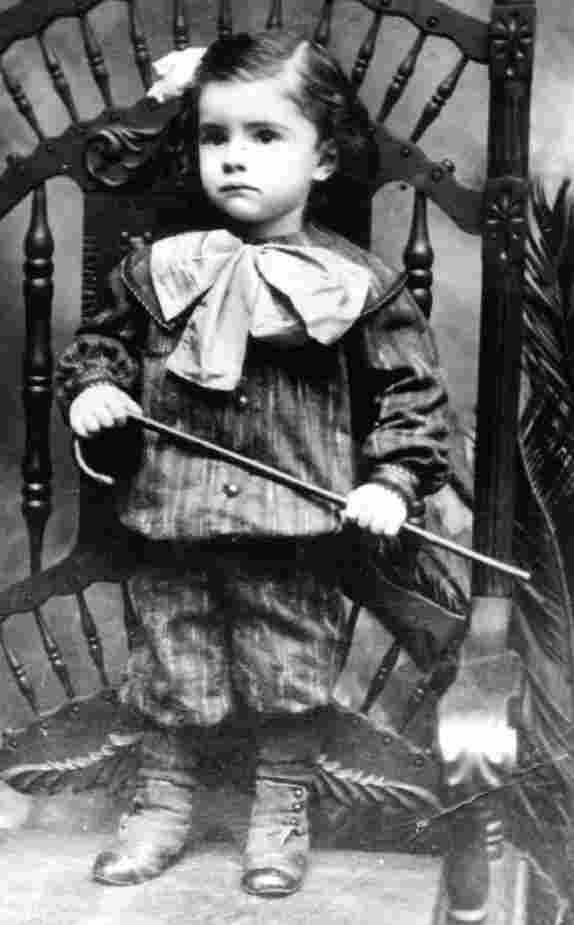
Interpreting Images of 19th Century Children: Toys and Props--Canes

Figure 1.--Information on the back of this portrait is: Abraham Joseph Leon, age 3 or 4, b.1902. HBC would estimate 3 years was most likely, meaning the portrait was taken in 1905. Note the bows and high top boots. Abraham has been given a child-size cane for the portarit.
|
HBC believes that a cane is usually a prop for a boy. There are of course few iron-clad rules, but this appears to a prop which correlates very strongly with gender. While some props can be used for either boys or girls, HBC believes that a cane is a fairly stromg indicator that the child photographed with a cane is a boy. In this case a cane is not something that a boy would normally carry. Unlike a toy which he might choose, a cane would be one chosen for him--perhaps by the farther. A cane would seem to be a strange item for mother to close. It is unclear, however, just why a came would be chosen.
The Cane
An HBC contributor reports that a cane belonged to a gentleman. It may be that the cane showed wealth as well as gender. As a gentlemen cairried a cane, it may well be that it was considered cute at the time to give a small boy a scaled down man's cane.
Strong Indicator
HBC believes that a cane is usually a prop for a boy. There are of course few iron-clad rules, but this appears to a prop which correlates very strongly with gender. While some props can be used for either boys or girls, HBC believes that a cane is a fairly stromg indicator that the child photographed with a cane is a boy. HBC has noted a number of boys with canes of varying descriptions. On the other hand has no observed girls holoding canes. Some girls were photographed carrying riding crops--but not canes.
Canes for Boys
In this case a cane is not something that a boy would normally carry. At least HBC does not believe that small boys would normally have canes. You know that if you give a boy that age a can he would soon be pokeing or satting someone with it.
That said, some of the canes they are photographed with are clearly child size canes. Is it possible that boys would commonly have canes purchased for them? Did boys at the turn of the century carry canes when they were dressed up for church or other special occasions? HBC thinks not, but has no conformation at this time. Perhaps the cane was a prop at the studio where the boy was photographes. Or perhaps it was purchased especially for the photograph. Unlike a toy which a boy might chose to be photographed with, a cane would be one chosen for him.
Prop Questions
The above discussion leads to some questions which HBC can not answeer with certainty.
Cane choice
The question arises as to just who would select a cane for the photograph. HBC believes that a young child would be unlikely to select it. HBC believes that a mother might be expected to chose a different prop. It would seem that father would be most likely to choose the cain.
Significance
It is unclear, however, just why a came would be chosen. The cane is for us today a useful prop to help determine gender. This does not mean that such was necesarily why the cane was used for a prop. HBC at this time does not knpw for a fact that a cane was used indicate a child's gender. HBC does know that often props in paintings and photographs were chosen tomconvey information. The gender of young children may well have been the reason a cane was selected.
Christopher Wagner

Navigate the Boys' Historical Clothing Web Site:
[Return to:Main photo prop page]
[Introduction]
[Activities]
[Bibliographies]
[Biographies]
[Chronology]
[Clothing styles]
[Contributions]
[Countries
[Boys' Clothing Home]
Navigate the Boys' Historical Clothing Web Site:
[Sailor suits]
[Sailor hats]
[Buster Brown suits]
[Eton suits]
[Rompers]
[Tunics]
[Smocks]
[Pinafores]
Created: October 22, 2000
Last updated: October 23, 2000



